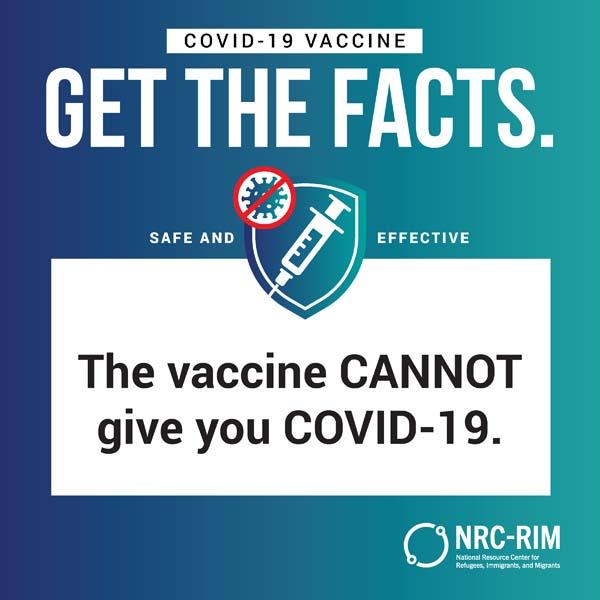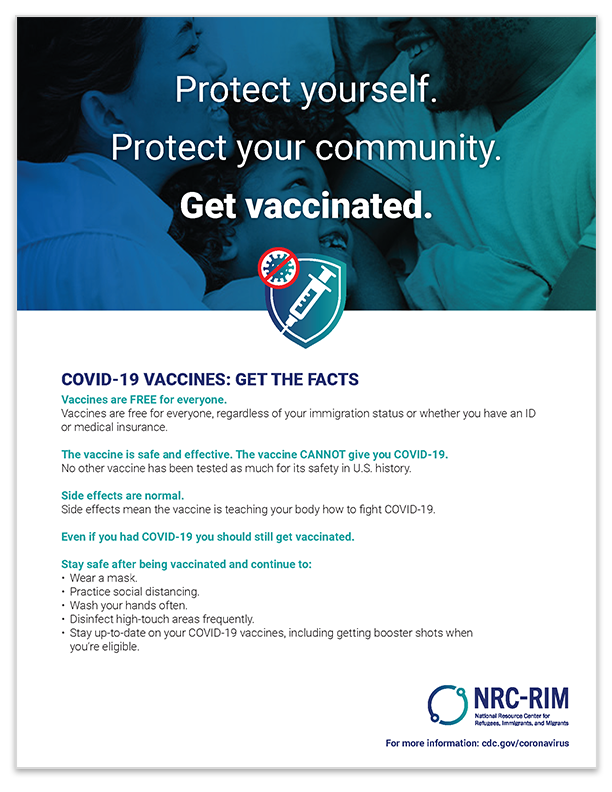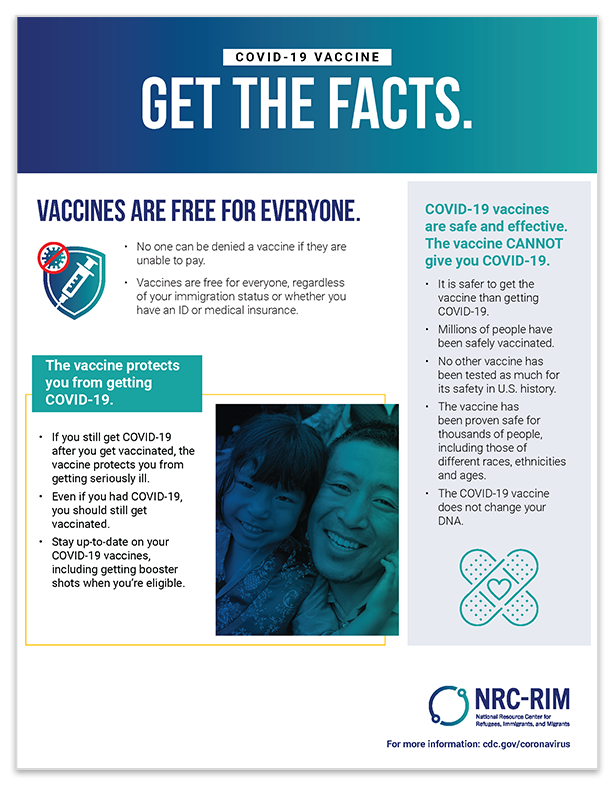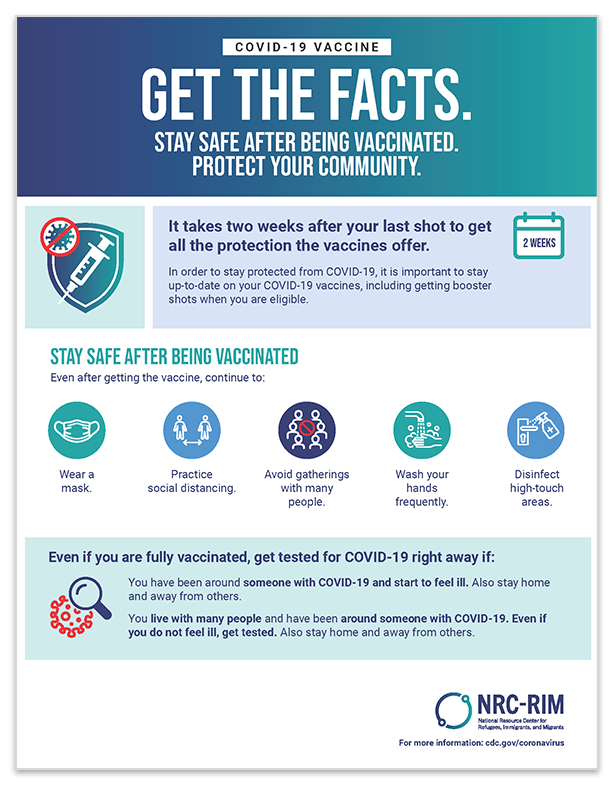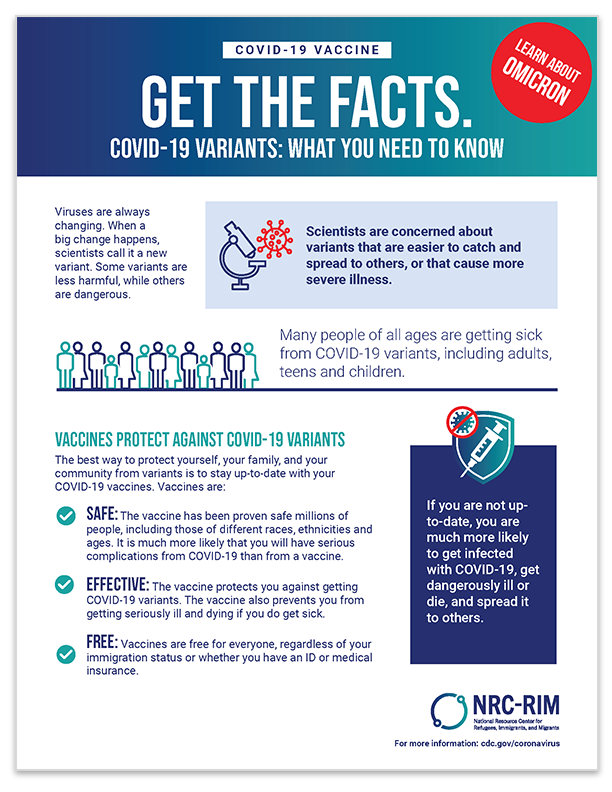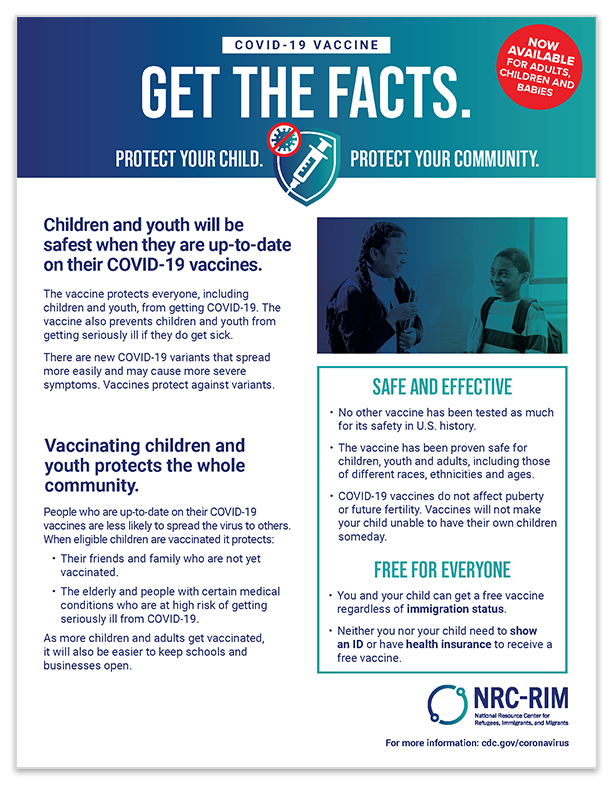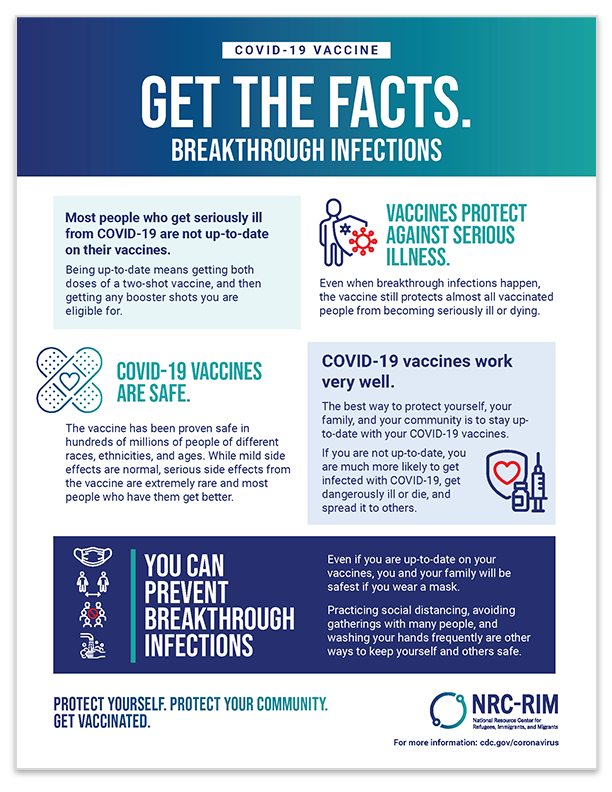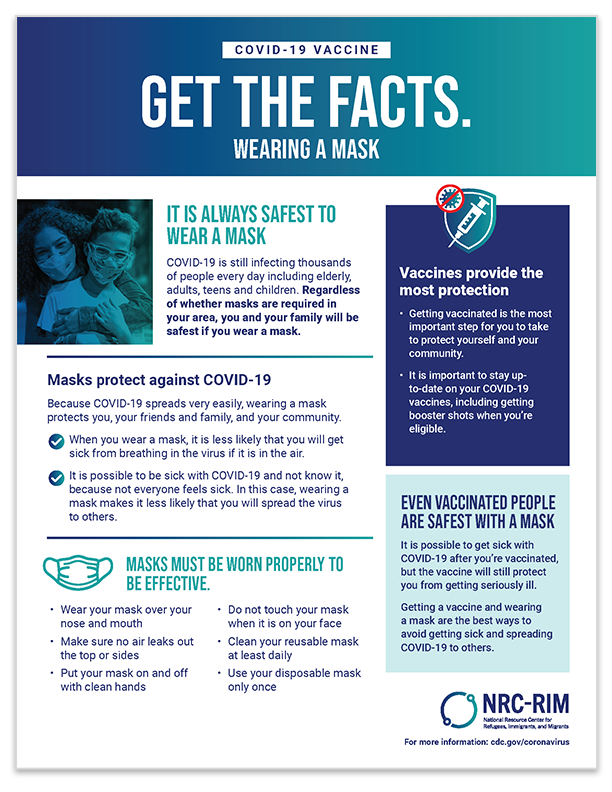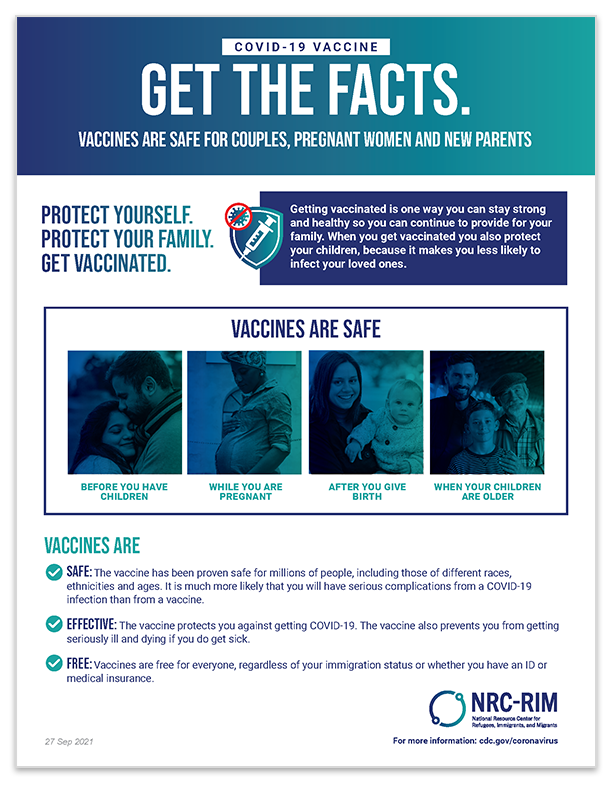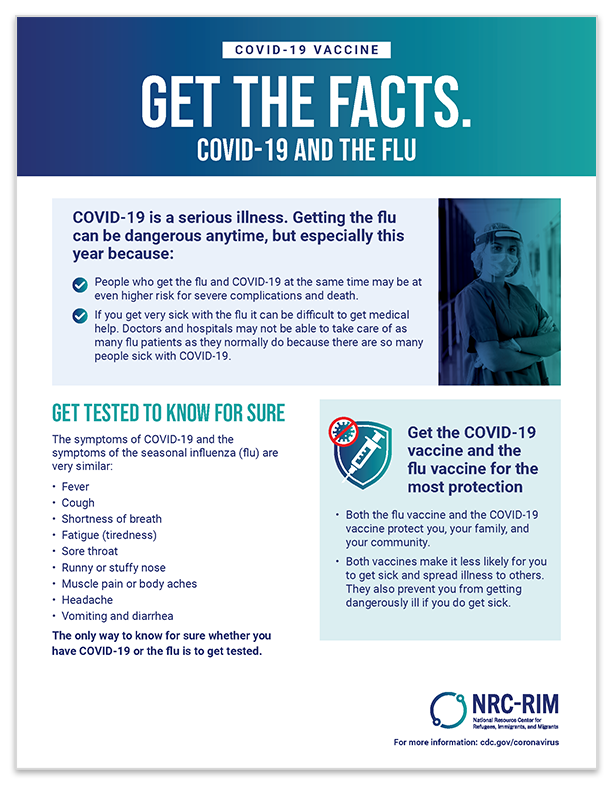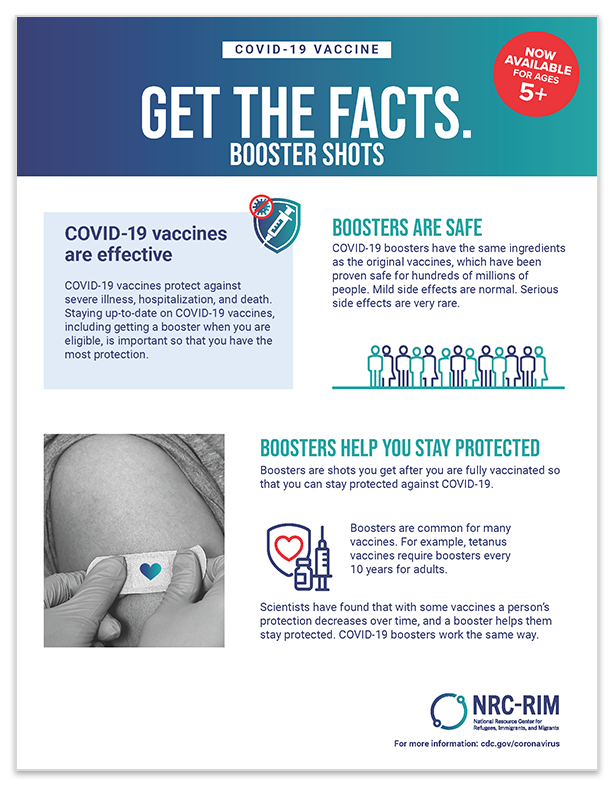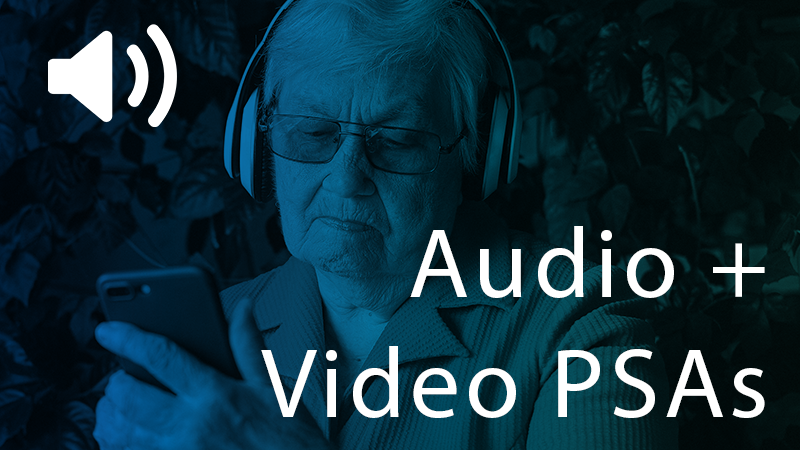
Ready-to-Use Version:
Amharic | Arabic | Burmese | Dari | Dinka | English | Farsi | French | Haitian Creole | Chin Hakha | Hmong | (Sgaw) Karen | Karenni | Kinyarwanda | Korean | Lao | Lingala | Mam | Marshallese | Nepali | Oromo | Pashto | Portuguese | Russian | Sango | Simplified Chinese | Sinhala | Somali | Spanish | Swahili (Congolese) | Swahili (East Africa) | Tagalog | Tamil | Telugu | Tigrinya | Traditional Chinese | Ukrainian | Urdu | Vietnamese
Customizable Version:
Amharic | Arabic | Burmese | Dari | Dinka | English | Farsi | French | Haitian Creole | Chin Hakha | Hmong | (Sgaw) Karen | Karenni | Kinyarwanda | Korean | Lao | Lingala | Mam | Marshallese | Nepali | Oromo | Pashto | Portuguese | Russian | Sango | Simplified Chinese | Sinhala | Somali | Spanish | Swahili (Congolese) | Swahili (East Africa) | Tagalog | Tamil | Telugu | Tigrinya | Traditional Chinese | Ukrainian | Urdu | Vietnamese
**Afar and Rohingya available upon request**
How to use social media assets on Facebook, Instagram, and WhatsApp
- Partner with trusted messengers in the target communities - faith leaders, educators, and others to send and amplify your posts.
- Only emphasize one message for each social media post to make it memorable.
- Include a caption with each image, by typing the text you see in the image directly into your post.
- Check out these NRC-RIM guides for more information:
Ready-to-Use Version
Amharic | Arabic | Burmese | Dari | Dinka | English | Farsi | French | Haitian Creole | Chin Hakha | Hmong | (Sgaw) Karen | Karenni | Kinyarwanda | Korean | Lao | Lingala | Mam | Marshallese | Nepali | Oromo | Pashto | Portuguese | Russian | Sango | Simplified Chinese | Sinhala | Somali | Spanish | Swahili (Congolese) | Swahili (East Africa) | Tagalog | Tamil | Telugu | Tigrinya | Traditional Chinese | Ukrainian | Urdu | Vietnamese
Customizable Version
Amharic | Arabic | Burmese | Dari | Dinka | English | Farsi | French | Haitian Creole | Chin Hakha | Hmong | (Sgaw) Karen | Karenni | Kinyarwanda | Korean | Lao | Lingala | Mam | Marshallese | Nepali | Oromo | Pashto | Portuguese | Russian | Sango | Simplified Chinese | Sinhala | Somali | Spanish | Swahili (Congolese) | Swahili (East Africa) | Tagalog | Tamil | Telugu | Tigrinya | Traditional Chinese | Ukrainian | Urdu | Vietnamese
**Afar and Rohingya available upon request**
How to use fact sheets effectively
- Consider customizing these fact sheets using the provided templates so that the images used reflect your target communities.
- Print and distribute fact sheets through various community locations and trusted organizations working with RIM communities. Some ideas include faith-based organizations, Federally Qualified Health Centers (FQHCs), youth groups, consulates and K-12 schools. Ask employers to put them in break rooms. You can also try libraries, community centers, farmers’ markets, grocery stores, laundromats and other high-traffic places.
- Share them on social media or on text-based apps like WhatsApp by taking a screenshot or converting the PDF to an image. Consider copy/pasting some of the statements from the fact sheet as your caption.
- Give a presentation using the information found on the long fact sheet. You can copy/paste information into a PowerPoint or use it as your presentation script.
Ready-to-Use Version
Amharic | Arabic | Burmese | Dari | Dinka | English | Farsi | French | Haitian Creole | Chin Hakha | Hmong | (Sgaw) Karen | Karenni | Kinyarwanda | Korean | Lao | Lingala | Mam | Marshallese | Nepali | Oromo | Pashto | Portuguese | Russian | Sango | Simplified Chinese | Sinhala | Somali | Spanish | Swahili (Congolese) | Swahili (East Africa) | Tagalog | Tamil | Telugu | Tigrinya | Traditional Chinese | Ukrainian | Urdu | Vietnamese
Customizable Version
Amharic | Arabic | Burmese | Dari | Dinka | English | Farsi | French | Haitian Creole | Chin Hakha | Hmong | (Sgaw) Karen | Karenni | Kinyarwanda | Korean | Lao | Lingala | Mam | Marshallese | Nepali | Oromo | Pashto | Portuguese | Russian | Sango | Simplified Chinese | Sinhala | Somali | Spanish | Swahili (Congolese) | Swahili (East Africa) | Tagalog | Tamil | Telugu | Tigrinya | Traditional Chinese | Ukrainian | Urdu | Vietnamese
**Afar and Rohingya available upon request**
How to use fact sheets effectively
- Consider customizing these fact sheets using the provided templates so that the images used reflect your target communities.
- Print and distribute fact sheets through various community locations and trusted organizations working with RIM communities. Some ideas include faith-based organizations, Federally Qualified Health Centers (FQHCs), youth groups, consulates and K-12 schools. Ask employers to put them in break rooms. You can also try libraries, community centers, farmers’ markets, grocery stores, laundromats and other high-traffic places.
- Share them on social media or on text-based apps like WhatsApp by taking a screenshot or converting the PDF to an image. Consider copy/pasting some of the statements from the fact sheet as your caption.
- Give a presentation using the information found on the long fact sheet. You can copy/paste information into a PowerPoint or use it as your presentation script.
Ready-to-Use Version
Amharic | Arabic | Burmese | Dari | Dinka | English | Farsi | French | Haitian Creole | Chin Hakha | Hmong | (Sgaw) Karen | Karenni | Kinyarwanda | Korean | Lao | Lingala | Mam | Marshallese | Nepali | Oromo | Pashto | Portuguese | Russian | Sango | Simplified Chinese | Sinhala | Somali | Spanish | Swahili (Congolese) | Swahili (East Africa) | Tagalog | Tamil | Telugu | Tigrinya | Traditional Chinese | Ukrainian | Urdu | Vietnamese
Customizable Version
Amharic | Arabic | Burmese | Dari | Dinka | English | Farsi | French | Haitian Creole | Chin Hakha | Hmong | (Sgaw) Karen | Karenni | Kinyarwanda | Korean | Lao | Lingala | Mam | Marshallese | Nepali | Oromo | Pashto | Portuguese | Russian | Sango | Simplified Chinese | Sinhala | Somali | Spanish | Swahili (Congolese) | Swahili (East Africa) | Tagalog | Tamil | Telugu | Tigrinya | Traditional Chinese | Ukrainian | Urdu | Vietnamese
**Afar and Rohingya available upon request**
How to use fact sheets effectively
- Consider customizing these fact sheets using the provided templates so that the images used reflect your target communities.
- Print and distribute fact sheets through various community locations and trusted organizations working with RIM communities. Some ideas include faith-based organizations, Federally Qualified Health Centers (FQHCs), youth groups, consulates and K-12 schools. Ask employers to put them in break rooms. You can also try libraries, community centers, farmers’ markets, grocery stores, laundromats and other high-traffic places.
- Share them on social media or on text-based apps like WhatsApp by taking a screenshot or converting the PDF to an image. Consider copy/pasting some of the statements from the fact sheet as your caption.
- Give a presentation using the information found on the long fact sheet. You can copy/paste information into a PowerPoint or use it as your presentation script.
Ready-to-Use Version
Amharic | Arabic | Burmese | Dari | Dinka | English | Farsi | French | Haitian Creole | Chin Hakha | Hmong | (Sgaw) Karen | Karenni | Kinyarwanda | Korean | Lao | Lingala | Marshallese | Nepali | Oromo | Pashto | Portuguese | Russian | Sango | Simplified Chinese | Sinhala | Somali | Spanish | Swahili (Congolese) | Swahili (East Africa) | Tagalog | Tamil | Telugu | Tigrinya | Traditional Chinese | Ukrainian | Urdu | Vietnamese
Customizable Version
Amharic | Arabic | Burmese | Dari | Dinka | English | Farsi | French | Haitian Creole | Chin Hakha | Hmong | (Sgaw) Karen | Karenni | Kinyarwanda | Korean | Lao | Lingala | Marshallese | Nepali | Oromo | Pashto | Portuguese | Russian | Sango | Simplified Chinese | Sinhala | Somali | Spanish | Swahili (Congolese) | Swahili (East Africa) | Tagalog | Tamil | Telugu | Tigrinya | Traditional Chinese | Ukrainian | Urdu | Vietnamese
**Afar, Mam and Rohingya available upon request**
How to use fact sheets effectively
- Consider customizing these fact sheets using the provided templates so that the images used reflect your target communities.
- Print and distribute fact sheets through various community locations and trusted organizations working with RIM communities. Some ideas include faith-based organizations, Federally Qualified Health Centers (FQHCs), youth groups, consulates and K-12 schools. Ask employers to put them in break rooms. You can also try libraries, community centers, farmers’ markets, grocery stores, laundromats and other high-traffic places.
- Share them on social media or on text-based apps like WhatsApp by taking a screenshot or converting the PDF to an image. Consider copy/pasting some of the statements from the fact sheet as your caption.
- Give a presentation using the information found on the long fact sheet. You can copy/paste information into a PowerPoint or use it as your presentation script.
Ready-to-Use Version
Amharic | Arabic | Burmese | Dari | Dinka | English | Farsi | French | Haitian Creole | Chin Hakha | Hmong | (Sgaw) Karen | Karenni | Kinyarwanda | Korean | Lao | Lingala | Marshallese | Nepali | Oromo | Pashto | Portuguese | Russian | Sango | Simplified Chinese | Sinhala | Somali | Spanish | Swahili (Congolese) | Swahili (East Africa) | Tagalog | Tamil | Telugu | Tigrinya | Traditional Chinese | Ukrainian | Urdu | Vietnamese
Customizable Version
Amharic | Arabic | Burmese | Dari | Dinka | English | Farsi | French | Haitian Creole | Chin Hakha | Hmong | (Sgaw) Karen | Karenni | Kinyarwanda | Korean | Lao | Lingala | Marshallese | Nepali | Oromo | Pashto | Portuguese | Russian | Sango | Simplified Chinese | Sinhala | Somali | Spanish | Swahili (Congolese) | Swahili (East Africa) | Tagalog | Tamil | Telugu | Tigrinya | Traditional Chinese | Ukrainian | Urdu | Vietnamese
**Afar, Mam and Rohingya available upon request**
How to use fact sheets effectively
- Consider customizing these fact sheets using the provided templates so that the images used reflect your target communities.
- Print and distribute fact sheets through various community locations and trusted organizations working with RIM communities. Some ideas include faith-based organizations, Federally Qualified Health Centers (FQHCs), youth groups, consulates and K-12 schools. Ask employers to put them in break rooms. You can also try libraries, community centers, farmers’ markets, grocery stores, laundromats and other high-traffic places.
- Share them on social media or on text-based apps like WhatsApp by taking a screenshot or converting the PDF to an image. Consider copy/pasting some of the statements from the fact sheet as your caption.
- Give a presentation using the information found on the long fact sheet. You can copy/paste information into a PowerPoint or use it as your presentation script.
Ready-to-Use Version
Amharic | Arabic | Burmese | Dari | Dinka | English | Farsi | French | Haitian Creole | Chin Hakha | Hmong | (Sgaw) Karen | Karenni | Kinyarwanda | Korean | Lao | Lingala | Marshallese | Nepali | Oromo | Pashto | Portuguese | Russian | Sango | Simplified Chinese | Sinhala | Somali | Spanish | Swahili (Congolese) | Swahili (East Africa) | Tagalog | Tamil | Telugu | Tigrinya | Traditional Chinese | Ukrainian | Urdu | Vietnamese
Customizable Version
Amharic | Arabic | Burmese | Dari | Dinka | English | Farsi | French | Haitian Creole | Chin Hakha | Hmong | (Sgaw) Karen | Karenni | Kinyarwanda | Korean | Lao | Lingala | Marshallese | Nepali | Oromo | Pashto | Portuguese | Russian | Sango | Simplified Chinese | Sinhala | Somali | Spanish | Swahili (Congolese) | Swahili (East Africa) | Tagalog | Tamil | Telugu | Tigrinya | Traditional Chinese | Ukrainian | Urdu | Vietnamese
How to use fact sheets effectively
- Consider customizing these fact sheets using the provided templates so that the images used reflect your target communities.
- Print and distribute fact sheets through various community locations and trusted organizations working with RIM communities. Some ideas include faith-based organizations, Federally Qualified Health Centers (FQHCs), youth groups, consulates and K-12 schools. Ask employers to put them in break rooms. You can also try libraries, community centers, farmers’ markets, grocery stores, laundromats and other high-traffic places.
- Share them on social media or on text-based apps like WhatsApp by taking a screenshot or converting the PDF to an image. Consider copy/pasting some of the statements from the fact sheet as your caption.
- Give a presentation using the information found on the long fact sheet. You can copy/paste information into a PowerPoint or use it as your presentation script.
Ready-to-Use Version
Amharic | Arabic | Burmese | Dari | Dinka | English | Farsi | French | Haitian Creole | Chin Hakha | Hmong | (Sgaw) Karen | Karenni | Kinyarwanda | Korean | Lao | Lingala | Marshallese | Nepali | Oromo | Pashto | Portuguese | Russian | Sango | Simplified Chinese | Sinhala | Somali | Spanish | Swahili (Congolese) | Swahili (East Africa) | Tagalog | Tamil | Telugu | Tigrinya | Traditional Chinese | Ukrainian | Urdu | Vietnamese
Customizable Version
Amharic | Arabic | Burmese | Dari | Dinka | English | Farsi | French | Haitian Creole | Chin Hakha | Hmong | (Sgaw) Karen | Karenni | Kinyarwanda | Korean | Lao | Lingala | Marshallese | Nepali | Oromo | Pashto | Portuguese | Russian | Sango | Simplified Chinese | Sinhala | Somali | Spanish | Swahili (Congolese) | Swahili (East Africa) | Tagalog | Tamil | Telugu | Tigrinya | Traditional Chinese | Ukrainian | Urdu | Vietnamese
Ready-to-Use Version
Amharic | Arabic | Burmese | Dari | Dinka | English | Farsi | French | Haitian Creole | Chin Hakha | Hmong | (Sgaw) Karen | Karenni | Kinyarwanda | Korean | Lao | Lingala | Marshallese | Nepali | Oromo | Pashto | Portuguese | Russian | Sango | Simplified Chinese | Sinhala | Somali | Spanish | Swahili (Congolese) | Swahili (East Africa) | Tagalog | Tamil | Telugu | Tigrinya | Traditional Chinese | Ukrainian | Urdu | Vietnamese
Customizable Version
Amharic | Arabic | Burmese | Dari | Dinka | English | Farsi | French | Haitian Creole | Chin Hakha | Hmong | (Sgaw) Karen | Karenni | Kinyarwanda | Korean | Lao | Lingala | Marshallese | Nepali | Oromo | Pashto | Portuguese | Russian | Sango | Simplified Chinese | Sinhala | Somali | Spanish | Swahili (Congolese) | Swahili (East Africa) | Tagalog | Tamil | Telugu | Tigrinya | Traditional Chinese | Ukrainian | Urdu | Vietnamese
How to use fact sheets effectively
- Consider customizing these fact sheets using the provided templates so that the images used reflect your target communities.
- Print and distribute fact sheets through various community locations and trusted organizations working with RIM communities. Some ideas include faith-based organizations, Federally Qualified Health Centers (FQHCs), youth groups, consulates and K-12 schools. Ask employers to put them in break rooms. You can also try libraries, community centers, farmers’ markets, grocery stores, laundromats and other high-traffic places.
- Share them on social media or on text-based apps like WhatsApp by taking a screenshot or converting the PDF to an image. Consider copy/pasting some of the statements from the fact sheet as your caption.
- Give a presentation using the information found on the long fact sheet. You can copy/paste information into a PowerPoint or use it as your presentation script.
Ready-to-Use Version
Arabic | Burmese | Dari | Dinka | English | Farsi | French | Karenni | Kinyarwanda | Lingala | Nepali | Pashto | Russian | Sango | Sinhala | Spanish | Swahili (Congolese) | Swahili (East Africa) | Tamil | Tigrinya | Ukrainian | Urdu
Customizable Version
Arabic | Burmese | Dari | Dinka | English | Farsi | French | Karenni | Kinyarwanda | Lingala | Nepali | Pashto | Russian | Sango | Sinhala | Spanish | Swahili (Congolese) | Swahili (East Africa) | Tamil | Tigrinya | Ukrainian | Urdu
Ready-to-Use Version
Amharic | Arabic | Burmese | Dari | Dinka | English | Farsi | French | Haitian Creole | Chin Hakha | Hmong | (Sgaw) Karen | Karenni | Kinyarwanda | Korean | Lao | Lingala | Marshallese | Nepali | Oromo | Pashto | Portuguese | Russian | Sango | Simplified Chinese | Sinhala | Somali | Spanish | Swahili (Congolese) | Swahili (East Africa) | Tagalog | Tamil | Telugu | Tigrinya | Traditional Chinese | Ukrainian | Urdu | Vietnamese
Customizable Version
Amharic | Arabic | Burmese | Dari | Dinka | English | Farsi | French | Haitian Creole | Chin Hakha | Hmong | (Sgaw) Karen | Karenni | Kinyarwanda | Korean | Lao | Lingala | Marshallese | Nepali | Oromo | Pashto | Portuguese | Russian | Sango | Simplified Chinese | Sinhala | Somali | Spanish | Swahili (Congolese) | Swahili (East Africa) | Tagalog | Tamil | Telugu | Tigrinya | Traditional Chinese | Ukrainian | Urdu | Vietnamese
Ready-to-Use Version
Amharic | Arabic | Burmese | Dari | Dinka | English | Farsi | French | Haitian Creole | Chin Hakha | Hmong | (Sgaw) Karen | Karenni | Kinyarwanda | Korean | Lao | Lingala | Marshallese | Nepali | Oromo | Pashto | Portuguese | Russian | Sango | Simplified Chinese | Sinhala | Somali | Spanish | Swahili (Congolese) | Swahili (East Africa) | Tagalog | Tamil | Telugu | Tigrinya | Traditional Chinese | Ukrainian | Urdu | Vietnamese
Customizable Version
Amharic | Arabic | Burmese | Dari | Dinka | English | Farsi | French | Haitian Creole | Chin Hakha | Hmong | (Sgaw) Karen | Karenni | Kinyarwanda | Korean | Lao | Lingala | Marshallese | Nepali | Oromo | Pashto | Portuguese | Russian | Sango | Simplified Chinese | Sinhala | Somali | Spanish | Swahili (Congolese) | Swahili (East Africa) | Tagalog | Tamil | Telugu | Tigrinya | Traditional Chinese | Ukrainian | Urdu | Vietnamese
How to use fact sheets effectively
- Partner with trusted messengers in the target communities - faith leaders, educators, and others to send and amplify your posts.
- Only emphasize one message for each social media post to make it memorable.
- Include a caption with each image, by typing the text you see in the image directly into your post.
- Check out these NRC-RIM guides for more information:
Video PSAs 1-6 (Downloadable)
Afar | Amharic | Arabic | Burmese | Cantonese | Dari | Dinka | Farsi | French | Haitian Creole | Chin Hakha | Hmong | (Sgaw) Karen | Karenni | Kinyarwanda | Korean | Lao | Lingala | Mam | Mandarin | Marshallese | Mixteco (Guerrera) | Mixteco (Oaxaca) | Nepali | Oromo | Pashto | Popti' | Portuguese | Q'anjob'al | Russian | Sango | Sinhala | Somali | Spanish | Swahili (Congolese) | Swahili (East Africa) | Tagalog | Tamil | Tigrinya | Ukrainian | Urdu | Vietnamese
Making the most of audio and video PSAs
- Contact local radio stations and TV channels that are popular with your target community and ask if they would be interested in playing these PSAs. Many stations will do this at little to no cost.
- Partner with community leaders or other trusted messengers to re-record the PSAs using the provided scripts if possible.
- Post these to social media and send them via WhatsApp. Ask key contacts in your target community to do the same.
- Check out these NRC-RIM guides for more information:
PSA 1:
COVID-19 vaccines are FREE for everyone, regardless of your immigration status or whether you have an ID or medical insurance. Protect yourself. Protect your community. Get vaccinated.
Afar: Audio | Video
Amharic: Audio | Video
Arabic: Audio | Video
Burmese: Audio | Video
Cantonese: Audio | Video
Dari: Audio | Video
Dinka: Audio | Video
English: Audio | Video
Farsi: Audio | Video
French: Audio | Video
Haitian Creole: Audio | Video
Chin Hakha: Audio | Video
Hmong: Audio | Video
(Sgaw) Karen: Audio | Video
Karenni: Audio | Video
Korean: Audio | Video
Kinyarwanda: Audio | Video
Lao: Audio | Video
Lingala: Audio | Video
Mam: Audio | Video
Mandarin: Audio | Video
Marshallese: Audio | Video
Mixteco (Guerrera): Audio | Video
Mixteco (Oaxaca): Audio | Video
Nepali: Audio | Video
Oromo: Audio | Video
Pashto: Audio | Video
Popti': Audio | Video
Portuguese: Audio | Video
Q'anjob'al: Audio | Video
Rohingya: Audio | Video
Russian: Audio | Video
Sango: Audio | Video
Sinhala: Audio | Video
Somali: Audio | Video
Spanish: Audio | Video
Swahili (Congolese): Audio | Video
Swahili (East Africa): Audio | Video
Tagalog: Audio | Video
Tamil: Audio | Video
Telugu: Audio | Video
Tigrinya: Audio | Video
Ukrainian: Audio | Video
Urdu: Audio | Video
Vietnamese: Audio | Video
PSA 2:
The COVID-19 vaccine protects you from getting COVID-19. If you still get COVID after you get vaccinated, the vaccine protects you from getting seriously ill. Even if you had COVID-19, you should still get vaccinated. Protect yourself. Protect your community. Get vaccinated.
Afar: Audio | Video
Amharic: Audio | Video
Arabic: Audio | Video
Burmese: Audio | Video
Cantonese: Audio | Video
Dari: Audio | Video
Dinka: Audio | Video
English: Audio | Video
Farsi: Audio | Video
French: Audio | Video
Haitian Creole: Audio | Video
Chin Hakha: Audio | Video
Hmong: Audio | Video
(Sgaw) Karen: Audio | Video
Karenni: Audio | Video
Korean: Audio | Video
Kinyarwanda: Audio | Video
Lao: Audio | Video
Lingala: Audio | Video
Mam: Audio | Video
Mandarin: Audio | Video
Marshallese: Audio | Video
Mixteco (Guerrera): Audio | Video
Mixteco (Oaxaca): Audio | Video
Nepali: Audio | Video
Oromo: Audio | Video
Pashto: Audio | Video
Popti': Audio | Video
Portuguese: Audio | Video
Q'anjob'al: Audio | Video
Rohingya: Audio | Video
Russian: Audio | Video
Sango: Audio | Video
Sinhala: Audio | Video
Somali: Audio | Video
Spanish: Audio | Video
Swahili (Congolese): Audio | Video
Swahili (East Africa): Audio | Video
Tagalog: Audio | Video
Tamil: Audio | Video
Telugu: Audio | Video
Tigrinya: Audio | Video
Ukrainian: Audio | Video
Urdu: Audio | Video
Vietnamese: Audio | Video
PSA 3
COVID-19 vaccines are safe and effective. The vaccine CANNOT give you COVID-19. No other vaccine has been tested as much for its safety in U.S. history. The vaccine has been proven safe for thousands of people, including those of different races, ethnicities and ages. No other vaccine has been tested as much for its safety in U.S. history and millions of people have been safely vaccinated. Protect yourself. Protect your community. Get vaccinated.
Afar: Audio | Video
Amharic: Audio | Video
Arabic: Audio | Video
Burmese: Audio | Video
Cantonese: Audio | Video
Dari: Audio | Video
Dinka: Audio | Video
English: Audio | Video
Farsi: Audio | Video
French: Audio | Video
Haitian Creole: Audio | Video
Chin Hakha: Audio | Video
Hmong: Audio | Video
(Sgaw) Karen: Audio | Video
Karenni: Audio | Video
Korean: Audio | Video
Kinyarwanda: Audio | Video
Lao: Audio | Video
Lingala: Audio | Video
Mam: Audio | Video
Mandarin: Audio | Video
Marshallese: Audio | Video
Mixteco (Guerrera): Audio | Video
Mixteco (Oaxaca): Audio | Video
Nepali: Audio | Video
Oromo: Audio | Video
Pashto: Audio | Video
Popti': Audio | Video
Portuguese: Audio | Video
Q'anjob'al: Audio | Video
Rohingya: Audio | Video
Russian: Audio | Video
Sango: Audio | Video
Sinhala: Audio | Video
Somali: Audio | Video
Spanish: Audio | Video
Swahili (Congolese): Audio | Video
Swahili (East Africa): Audio | Video
Tagalog: Audio | Video
Tamil: Audio | Video
Telugu: Audio | Video
Tigrinya: Audio | Video
Ukrainian: Audio | Video
Urdu: Audio | Video
Vietnamese: Audio | Video
PSA 4
COVID-19 vaccines are safe and effective. Side effects are normal and mean the vaccine is teaching your body how to fight the virus. You CANNOT get COVID-19 from the vaccine. Protect yourself. Protect your community. Get vaccinated.
Afar: Audio | Video
Amharic: Audio | Video
Arabic: Audio | Video
Burmese: Audio | Video
Cantonese: Audio | Video
Dari: Audio | Video
Dinka: Audio | Video
English: Audio | Video
Farsi: Audio | Video
French: Audio | Video
Haitian Creole: Audio | Video
Chin Hakha: Audio | Video
Hmong: Audio | Video
(Sgaw) Karen: Audio | Video
Karenni: Audio | Video
Korean: Audio | Video
Kinyarwanda: Audio | Video
Lao: Audio | Video
Lingala: Audio | Video
Mam: Audio | Video
Mandarin: Audio | Video
Marshallese: Audio | Video
Mixteco (Guerrera): Audio | Video
Mixteco (Oaxaca): Audio | Video
Nepali: Audio | Video
Oromo: Audio | Video
Pashto: Audio | Video
Popti': Audio | Video
Portuguese: Audio | Video
Q'anjob'al: Audio | Video
Rohingya: Audio | Video
Russian: Audio | Video
Sango: Audio | Video
Sinhala: Audio | Video
Somali: Audio | Video
Spanish: Audio | Video
Swahili (Congolese): Audio | Video
Swahili (East Africa): Audio | Video
Tagalog: Audio | Video
Tamil: Audio | Video
Telugu: Audio | Video
Tigrinya: Audio | Video
Ukrainian: Audio | Video
Urdu: Audio | Video
Vietnamese: Audio | Video
PSA 5
The COVID-19 vaccine is halal. The COVID-19 vaccine does not contain any animal products. The COVID-19 vaccine does not change your DNA. The vaccine has been proven safe for thousands of people, including those of different races, ethnicities and ages. Protect yourself. Protect your community. Get vaccinated.
Afar: Audio | Video
Amharic: Audio | Video
Arabic: Audio | Video
Burmese: Audio | Video
Cantonese: Audio | Video
Dari: Audio | Video
Dinka: Audio | Video
English: Audio | Video
Farsi: Audio | Video
French: Audio | Video
Haitian Creole: Audio | Video
Chin Hakha: Audio | Video
Hmong: Audio | Video
(Sgaw) Karen: Audio | Video
Karenni: Audio | Video
Korean: Audio | Video
Kinyarwanda: Audio | Video
Lao: Audio | Video
Lingala: Audio | Video
Mam: Audio | Video
Mandarin: Audio | Video
Marshallese: Audio | Video
Mixteco (Guerrera): Audio | Video
Mixteco (Oaxaca): Audio | Video
Nepali: Audio | Video
Oromo: Audio | Video
Pashto: Audio | Video
Popti': Audio | Video
Portuguese: Audio | Video
Q'anjob'al: Audio | Video
Rohingya: Audio | Video
Russian: Audio | Video
Sango: Audio | Video
Sinhala: Audio | Video
Somali: Audio | Video
Spanish: Audio | Video
Swahili (Congolese): Audio | Video
Swahili (East Africa): Audio | Video
Tagalog: Audio | Video
Tamil: Audio | Video
Telugu: Audio | Video
Tigrinya: Audio | Video
Ukrainian: Audio | Video
Urdu: Audio | Video
Vietnamese: Audio | Video
PSA 6
Stay safe after being vaccinated from COVID-19. Even after getting the vaccine, continue to wear a mask, practice social distancing, wash your hands often, and disinfect high-touch areas frequently.
Afar: Audio | Video
Amharic: Audio | Video
Arabic: Audio | Video
Burmese: Audio | Video
Cantonese: Audio | Video
Dari: Audio | Video
Dinka: Audio | Video
English: Audio | Video
Farsi: Audio | Video
French: Audio | Video
Haitian Creole: Audio | Video
Chin Hakha: Audio | Video
Hmong: Audio | Video
(Sgaw) Karen: Audio | Video
Karenni: Audio | Video
Korean: Audio | Video
Kinyarwanda: Audio | Video
Lao: Audio | Video
Lingala: Audio | Video
Mam: Audio | Video
Mandarin: Audio | Video
Marshallese: Audio | Video
Mixteco (Guerrera): Audio | Video
Mixteco (Oaxaca): Audio | Video
Nepali: Audio | Video
Oromo: Audio | Video
Pashto: Audio | Video
Popti': Audio | Video
Portuguese: Audio | Video
Q'anjob'al: Audio | Video
Rohingya: Audio | Video
Russian: Audio | Video
Sango: Audio | Video
Sinhala: Audio | Video
Somali: Audio | Video
Spanish: Audio | Video
Swahili (Congolese): Audio | Video
Swahili (East Africa): Audio | Video
Tagalog: Audio | Video
Tamil: Audio | Video
Telugu: Audio | Video
Tigrinya: Audio | Video
Ukrainian: Audio | Video
Urdu: Audio | Video
Vietnamese: Audio | Video
Breakthrough Infections PSA
COVID-19 vaccines work very well. Most people who get COVID-19 are unvaccinated. It is uncommon for people to get COVID-19 after they are vaccinated, but it can happen. Scientists call this a “breakthrough infection.” Even when breakthrough infections happen, the vaccine still protects almost all vaccinated people from becoming seriously ill or dying. You can prevent breakthrough infections in your community by wearing a mask, even if you are vaccinated. Protect yourself. Protect your community.
Afar: Audio | Video
Amharic: Audio | Video
Arabic: Audio | Video
Burmese: Audio | Video
Cantonese: Audio| Video
Dari: Audio | Video
Dinka: Audio | Video
English: Audio | Video
Farsi: Audio | Video
French: Audio | Video
Haitian Creole: Audio | Video
Chin Hakha: Audio | Video
Hmong: Audio | Video
(Sgaw) Karen: Audio | Video
Karenni: Audio | Video
Korean: Audio | Video
Kinyarwanda: Audio | Video
Lao: Audio | Video
Lingala: Audio | Video
Mandarin: Audio | Video
Marshallese: Audio | Video
Nepali: Audio | Video
Oromo: Audio | Video
Pashto: Audio | Video
Portuguese: Audio | Video
Rohingya: Audio | Video
Russian: Audio | Video
Sango: Audio | Video
Sinhala: Audio | Video
Somali: Audio | Video
Spanish: Audio | Video
Swahili (Congolese): Audio | Video
Swahili (East Africa): Audio | Video
Tagalog: Audio | Video
Tamil: Audio | Video
Telugu: Audio | Video
Tigrinya: Audio | Video
Ukrainian: Audio | Video
Urdu: Audio | Video
Vietnamese: Audio | Video
Fertility + Parenthood PSA
COVID-19 vaccines do not affect people’s ability to have children. There is no evidence the vaccines affect women’s ability to get pregnant, nor do they affect men’s reproductive ability. COVID-19 vaccines are also safe for caregivers who are pregnant or breastfeeding. Getting vaccinated is one way you can stay strong and healthy so you can continue to provide for your family. When you get vaccinated you also protect your children, because it makes you less likely to infect your loved ones. Protect yourself. Protect your family. Get vaccinated.
Afar: Audio | Video
Amharic: Audio | Video
Arabic: Audio | Video
Burmese: Audio | Video
Cantonese: Audio | Video
Dari: Audio | Video
Dinka: Audio | Video
English: Audio | Video
Farsi: Audio | Video
French: Audio | Video
Haitian Creole: Audio | Video
Chin Hakha: Audio | Video
Hmong: Audio | Video
(Sgaw) Karen: Audio | Video
Karenni: Audio | Video
Korean: Audio | Video
Kinyarwanda: Audio | Video
Lao: Audio | Video
Lingala: Audio | Video
Mandarin: Audio | Video
Marshallese: Audio | Video
Nepali: Audio | Video
Oromo: Audio | Video
Pashto: Audio | Video
Portuguese: Audio | Video
Rohingya: Audio | Video
Russian: Audio | Video
Sango: Audio | Video
Sinhala: Audio | Video
Somali: Audio | Video
Spanish: Audio | Video
Swahili (Congolese): Audio | Video
Swahili (East Africa): Audio | Video
Tagalog: Audio | Video
Tamil: Audio | Video
Telugu: Audio | Video
Tigrinya: Audio | Video
Ukrainian: Audio | Video
Urdu: Audio | Video
Vietnamese: Audio | Video
Wearing a Mask PSA
Regardless of whether masks are required in your area, you and your family will be safest if you wear a mask. Because COVID-19 spreads very easily, wearing a mask protects you, your friends and family, and your community. Even vaccinated people are safest with a mask. It is uncommon for people to get sick with COVID-19 after they are vaccinated, but it can happen. Getting a vaccine and wearing a mask are the best ways to avoid getting sick and spreading COVID-19 to others. Protect yourself. Protect your community.
Afar: Audio | Video
Amharic: Audio | Video
Arabic: Audio | Video
Burmese: Audio | Video
Cantonese: Audio | Video
Dari: Audio | Video
Dinka: Audio | Video
English: Audio | Video
Farsi: Audio | Video
French: Audio | Video
Haitian Creole: Audio | Video
Chin Hakha: Audio | Video
Hmong: Audio | Video
(Sgaw) Karen: Audio | Video
Karenni: Audio | Video
Kinyarwanda: Audio | Video
Korean: Audio | Video
Lao: Audio | Video
Lingala: Audio | Video
Mandarin: Audio | Video
Marshallese: Audio | Video
Nepali: Audio | Video
Oromo: Audio | Video
Pashto: Audio | Video
Portuguese: Audio | Video
Rohingya: Audio | Video
Russian: Audio | Video
Sango: Audio | Video
Sinhala: Audio | Video
Somali: Audio | Video
Spanish: Audio | Video
Swahili (Congolese): Audio | Video
Swahili (East Africa): Audio | Video
Tagalog: Audio | Video
Tamil: Audio | Video
Telugu: Audio | Video
Tigrinya: Audio | Video
Ukrainian: Audio | Video
Urdu: Audio | Video
Vietnamese: Audio | Video
COVID-19 & the Flu PSA
People who get the flu and COVID-19 at the same time may be at even higher risk for severe complications and death. Get the COVID-19 vaccine and the flu vaccine for the most protection. Both vaccines protect you, your family, and your community. Both vaccines make it less likely for you to get sick and spread illness to others. They also prevent you from getting dangerously ill if you do get sick. It is safe and effective to get both the COVID-19 vaccine and the flu vaccine at the same time. Protect yourself. Protect your community. Get vaccinated.
Booster Shots PSA
Boosters are shots you get a few months after you are fully vaccinated so that you can stay protected against COVID-19. Boosters are common for many vaccines. Scientists have found that with some vaccines a person’s protection decreases over time, and a booster helps them stay protected. The COVID-19 booster works the same way. Boosters are safe, effective, and free for everyone. Protect yourself, Protect your community. Get vaccinated.
Afar: Audio | Video
Amharic: Audio | Video
Arabic: Audio | Video
Burmese: Audio | Video
Cantonese: Audio | Video
Dari: Audio | Video
Dinka: Audio | Video
English: Audio | Video
Farsi: Audio | Video
French: Audio | Video
Haitian Creole: Audio | Video
Chin Hakha: Audio | Video
Hmong: Audio | Video
(Sgaw) Karen: Audio | Video
Karenni: Audio | Video
Kinyarwanda: Audio | Video
Korean: Audio | Video
Lao: Audio | Video
Lingala: Audio | Video
Mandarin: Audio | Video
Marshallese: Audio | Video
Nepali: Audio | Video
Oromo: Audio | Video
Pashto: Audio | Video
Portuguese: Audio | Video
Rohingya: Audio | Video
Russian: Audio | Video
Sango: Audio | Video
Sinhala: Audio | Video
Somali: Audio | Video
Spanish: Audio | Video
Swahili (Congolese): Audio | Video
Swahili (East Africa): Audio | Video
Tagalog: Audio | Video
Tamil: Audio | Video
Telugu: Audio | Video
Tigrinya: Audio | Video
Ukrainian: Audio | Video
Urdu: Audio | Video
Vietnamese: Audio | Video
COVID-19 Testing PSA
People are getting tested regardless of whether they are vaccinated and regardless of whether they feel sick because it makes our communities safer. Anyone can get tested, including adults, children and babies. Because the symptoms of COVID-19, influenza, and the common cold are very similar, the only way to know if you have COVID is to get tested. Staying home from work, school, or social events if you test positive or anytime you feel sick is one of the most important things you can do to protect your community.
Afar: Audio | Video
Amharic: Audio | Video
Arabic: Audio | Video
Burmese: Audio | Video
Cantonese: Audio | Video
Dari: Audio | Video
Dinka: Audio | Video
English: Audio | Video
Farsi: Audio | Video
French: Audio | Video
Haitian Creole: Audio | Video
Chin Hakha: Audio | Video
Hmong: Audio | Video
(Sgaw) Karen: Audio | Video
Karenni: Audio | Video
Kinyarwanda: Audio | Video
Korean: Audio | Video
Lao: Audio | Video
Lingala: Audio | Video
Mandarin: Audio | Video
Marshallese: Audio | Video
Nepali: Audio | Video
Oromo: Audio | Video
Pashto: Audio | Video
Portuguese: Audio | Video
Rohingya: Audio | Video
Russian: Audio | Video
Sango: Audio | Video
Sinhala: Audio | Video
Somali: Audio | Video
Spanish: Audio | Video
Swahili (Congolese): Audio | Video
Swahili (East Africa): Audio | Video
Tagalog: Audio | Video
Tamil: Audio | Video
Telugu: Audio | Video
Tigrinya: Audio | Video
Ukrainian: Audio | Video
Urdu: Audio | Video
Vietnamese: Audio | Video
